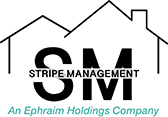In the state of Maryland, the real estate landscape is governed by several state and federal regulations. Among these, the guidelines related to lead inspection are of particular significance for landlords. Understanding this can be a challenging task, but it is necessary to run a transparent and compliant rental business. This discourse is intended to provide Maryland landlords with an overview of the Lead Poisoning Prevention Program, when such inspections are required, the actual inspection process, post-inspection measures and their rights and responsibilities under the law.
Understanding the Lead Poisoning Prevention Program
Understanding Maryland’s Lead Poisoning Prevention Program
The Lead Poisoning Prevention Program is a healthcare initiative implemented by the state of Maryland to curb the prevalence of lead poisoning. This program is particularly aimed towards the maintenance and improvement of rental properties to ensure that they do not pose any risks to tenants’ health. As a landlord in Maryland, one is legally obligated to conform to these set lead inspection standards for the benefit of tenants and society as whole.
Fundamentals of the Lead Poisoning Prevention Program
This program mandates landlords to conduct regular inspections in their rental properties to test for lead-based paint hazards. Lead-based paint was widely used in residencies built before 1978, with the risk escalating for homes built before 1950. When this paint begins to chip or deteriorate, it presents a grave health risk to individuals, especially young children, when ingested or inhaled.
The fundamentals of the program stress the importance of lead-free or lead-safe housing. Lead-free properties are those where it has been confirmed that no lead-based paint hazards exist, either because the property was never painted with lead-based paint or all the paint has been completely removed. Lead-safe properties, on the other hand, are those where, even if they contain lead-based paint, it has been determined that no hazards exist at the time of inspection.
Regulations Set by the Department of the Environment
The Maryland Department of the Environment (MDE) requires that landlords have their properties inspected by a certified professional before each change of occupancy. The inspector uses specialized technology to check for lead-based paint hazards. If the rental property passes the inspection, landlords earn a lead-free or a lead-safe certificate to confirm compliance. This certificate should be submitted to the MDE and also presented to the new tenant before occupancy.
Consequences for Non-Compliance
There are hefty penalties for landlords who fail to comply with the set lead inspection regulations. If a landlord is found to be leasing a property without a certificate confirming lead-safety or lead-freeness or neglects to provide the required educational materials to tenants, legal action can be taken. Such penalties can range from heavy fines to legal litigations, potentially leading to the loss of rental licenses in extreme cases.
Continuing Obligations
On top of initial inspections for each new tenancy, landlords also have a responsibility to respond to tenant concerns promptly about deteriorating paint, and old lead paint dust. Such issues should be addressed by a certified contractor as quickly as possible to keep properties lead-safe as well as retain certification status.
Being a landlord carries significant responsibilities, one of which is ensuring the health and safety of your tenants through compliance with the Maryland Lead Poisoning Prevention Program. By understanding and adhering to this program, you can steer clear of legal complications and provide a safe living environment for your renters.

Determining the Requirement for Lead Inspection
Getting to Grips with Lead Inspection Obligations
In the state of Maryland, it is a legal imperative for landlords to conduct lead inspections on their properties. Whether a lead inspection is necessary largely hinges on the property’s construction date. Homes constructed prior to 1978 are predominantly susceptible since lead-based paint, known for its harmful health effects, was frequently utilized in residential properties until banned in that year.
Determining Factors for Lead Inspection
Lead inspection is particularly crucial if the building was constructed prior to 1950. This is because the concentration of lead in residential paint was significantly higher during this period. Apart from the year of construction, another factor that mandates lead inspection is the occupancy status of the property. If a pregnant woman or a child under the age of six resides in the property, Maryland law requires that a lead inspection be carried out for the safety of these vulnerable groups.
Identification of Previously Affected Properties
Additionally, landlords should take into account if the property has been previously affected by lead. Previous cases of lead poisoning or lead dust violations, especially in properties built prior to 1978, necessitate regular and thorough lead inspections. Maryland law mandates that landlords of such properties must pass stringent lead risk reduction standards before leasing the property again.
Lead Inspection Process
During a lead inspection, a certified lead inspector will take samples from various parts of the property like the walls, window sills, and doors. These samples are then examined in a lab to determine the lead content. If necessary, the inspector may also employ methods like X-Ray Fluorescence (XRF) to evaluate the presence of lead-based paint on the property, without disturbing the painted surface.
The Importance of Lead Inspection Regulation Compliance
In Maryland, landlords are required by law to strictly adhere to lead inspection regulations and lead risk reduction measures. Non-compliance can result in hefty fines and increase landlords’ liability in any lead poisoning lawsuits.
Besides carrying out mandatory lead inspections, landlords must also educate their tenants about lead hazards by providing relevant materials. A notice must be given to tenants, confirming that the property has complied with Maryland’s lead risk reduction standards. Therefore, understanding and complying with these lead inspection regulations are pivotal not only to uphold legal responsibilities, but also to ensure tenant safety and well-being.

The Lead Inspection Process
Who is accountable for lead inspections?
Maryland law mandates that landlords owning properties built before 1978 must ensure these dwellings are lead-free. To enforce this, the Maryland Department of the Environment (MDE) is in charge of certifying and supervising qualified lead inspectors and risk assessors.
Hiring a professional inspector
To start with, landlords need to hire a certifiable lead inspector. These are professionals who have passed the state-required training and obtained certification from the MDE to conduct lead-based paint inspection and risk assessment. Landlords can search for certified lead inspectors through the MDE’s lead-accredited firms database.
Approved Testing Methods
Lead-based paint inspections involve the use of X-ray fluorescence (XRF) devices which can accurately measure the amount of lead in layers of paint. A risk assessment may also be carried out to determine the presence, amount, severity, and location of lead-based paint hazards and risks. The assessment usually includes paint dust sampling and a thorough visual inspection of the paint condition and its potential hazards.
For properties built between 1950-1978, dust sampling is another approved method. In this case, lead-dust wipe samples are collected from window sills, window wells, and uncarpeted floors. Samples are then sent to a laboratory for lead analysis.
Process of Lead Inspection
A complete lead paint inspection involves the investigation of every painted surface in the rental property, both interior and exterior. This typically includes walls, windows, doors, trim, kitchens, bathrooms, and also extends to exterior porches, stair railings, and siding.
An inspector uses an XRF instrument to scan each of these surfaces systematically. The XRF instrument uses radiation to detect lead content down to each layer of paint. The readings from the XRF are usually instant, making the process relatively quick.
Cost of lead inspection
The cost of lead inspection can vary depending on the size of the property and the extent of the inspection required. Inspections can range from a few hundred to upwards of a thousand dollars. In addition to the initial inspection cost, there may also be costs involved in lead abatement if lead is found.
Time Required for Lead Inspection
In terms of timeframe, a lead inspection can take anywhere from a few hours to a full day or more, again depending on the size and complexity of the property. The laboratory analysis of samples—if required—may take additional time, typically within a few days.
Finally, if lead-based paint is detected, landlords are then responsible for taking the necessary steps to reduce the lead hazard. This may involve lead abatement or encapsulation which is the process of encapsulating lead-based paint with a high-build coating to prevent its deterioration. In this case, it is crucial for landlords to retest the property for lead hazards once remediation has been completed to ensure it is safe for tenants.
For landlords in Maryland, understanding and complying with lead inspection procedures is crucial. This not only ensures the safety and health of their tenants, but also protects them from potential legal issues and penalties.

Post-Inspection Measures and Lead Certification
Addressing Identified Issues
Following the completion of a lead hazard inspection on a rental property in Maryland, it’s the landlords’ responsibility to swiftly rectify any found issues. This could require immediate lead hazard reduction techniques, such as paint stabilization or interim controls. It may also necessitate more extensive methods like lead abatement or encapsulation. These post-inspection actions aim to either completely remove the lead-based paint hazards or efficiently contain them to prevent possible exposure.
Dealing with Lead Contamination
The process of dealing with lead contamination can be potentially dangerous and is strictly regulated. Landlords cannot carry out lead removal work themselves unless they’re certified to do so by the Maryland Department of Environment. Usually, professional lead abatement contractors are hired to perform the necessary containment or removal of lead-based paint. Using a certified contractor also ensures that all work conforms to state and federal safety standards.
Property Deleading
Deleading is a process that completely removes all lead-based paint from a property. This is the most effective, but the most disruptive and expensive method of dealing with lead hazards. Post-removal, the property can potentially qualify for a Lead-Free Certification, provided all surfaces are found to be free of lead by a certified inspector.
Re-inspections
After lead hazard reduction work has been completed, a re-inspection of the property is necessary. In Maryland, a third-party lead-dust test must be performed by an accredited laboratory or a state-certified lead paint risk assessor. During the re-inspection, dust samples are collected from windowsills, floors, and other surfaces and sent to a lab for testing. If lead levels are found to be at or below the established standards, the property passes inspection.
Lead-Free or Limited Lead-Free Certification
A Lead-Free Certification, as the name suggests, indicates that a property is completely free of lead. Obtaining this certification allows the landlord to be exempted from most stringent lead laws in Maryland.
A Limited Lead-Free Certificate, on the other hand, certifies that the interior of a property is lead-free, but lead hazards may still exist on the exterior painted surfaces.
These certificates are issued by the Maryland Department of Environment, only after a thorough inspection and testing by a certified inspector confirms the absence of lead hazards.
Understanding Tenant Turnover Measures
For landlords responsible for properties in Maryland, the importance of adhering to specific measures during tenant turnover is non-negotiable, especially in cases where a full Lead-Free or limited Lead-Free Certificate is not obtainable. Particular specifications for landlords include the provision of EPA-approved data concerning lead-related hazards, implementing lead dust tests and ensuring the property is free of any detected lead dangers. Should a unit fail the initial lead dust test, the landlord is then required to take further lead reducing actions and reevaluate the property before any new tenant occupancy. Adherence to these rules will not only uphold the wellbeing of tenants, but also protect landlords from future legal complications and punitive damages.

Rights and Responsibilities of a Landlord
Introduction to Maryland’s Lead-Based Laws
In Maryland, landlords are obligated to adhere to both federal and state-sanctioned lead-based paint laws if they own properties constructed prior to 1978. These properties are considered high risk, as lead-based paint could potentially be present, posing health risks especially to children and pregnant women. Exposure to this can result in serious health complications such as lead poisoning. Therefore, understanding and abiding by these laws is crucial for the safety of tenants and for the continued legal operation of landlords’ properties.
The Maryland Lead Risk Reduction in Housing Act
This act, signed into law in 1994, provides steps to ensure leased properties are safe for occupancy. Under this act, owners of rental properties built prior to 1978 must complete various risk reduction treatments based on the age of the dwelling and whether a child under the age of 6 resides there. For instance, in instances where a tenant or a tenant’s child has been identified as having lead poisoning, landlords are required to perform Full Risk Reduction measures.
Landlord Responsibilities
Landlords are responsible for having their properties inspected by an accredited Maryland Lead Paint Inspection Service before tenants move in. Furthermore, landlords must provide tenants with copies of the result of the most recent lead paint risk reduction certificate and a tenants’ rights guide. Moreover, landlords are further mandated to fix identified chipping, peeling, or flaking paint and must maintain their rental properties to prevent the further generation of lead-contaminated dust.
Liability and Potential Lawsuits
Landlords should be aware that, in the event of a tenant suffering lead exposure, they could face legal repercussions. This might result in hefty financial penalties or even imprisonment. However, landlords can protect against some of these liabilities by obtaining a certificate proving that the property has received either a lead-free or limited lead-free inspection. It’s also vital that landlords keep all their lead certification documents. Additionally, landlords can protect themselves by ensuring the lease agreement includes provisions where the tenant agrees to immediately notify the landlord of any deteriorating paint or newly formed water leaks.
Maintaining Compliance
To maintain compliance, landlords must receive a new lead inspection certificate each time there’s a tenant turnover. They must also register their units annually. Landlords must also educate themselves about the Environmental Protection Agency’s (EPA) renovation, repair, and painting program to ensure any renovations abide by the required safety standards.
Benefits of Compliance for Landlords
Complying with these regulations not only ensures the safety of tenants but also carries substantial benefits for landlords. This includes qualified immunity from tort liability for lead paint poisoning for landlords who have complied with risk reduction standards. Furthermore, it ensures that the landlord’s business reputation remains unharmed, thereby attracting more tenants in the future. Compliance also provides peace of mind for landlords, knowing that they are providing a safe and healthy environment for their tenants.

Photo by tierramallorca on Unsplash
Every Maryland landlord should be conversant with the implications of lead contamination in rental properties. There might be uncertainties and challenges along the way, but developing an understanding of the lead inspection process and related regulations is a crucial first step. The importance of mitigating lead risk goes beyond just legal implications – it also impacts the health and safety of the tenants. With the knowledge provided herein, landlords are better equipped to manage their properties, ensuring they meet the stipulated guidelines and promote a safe living environment for all occupants.
